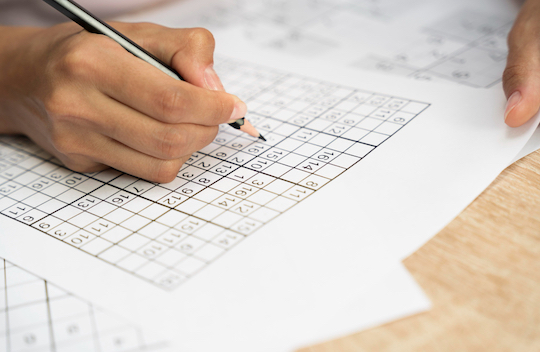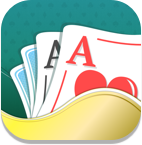Types of number puzzles

Numbers puzzles are an excellent pastime for players of all ages. They are fun, challenging, and keep the brain sharp by requiring the use of logical and/or numerical reasoning to find their solution. Teachers and parents often use them as a fun educational asset to help kids develop their mental reasoning, for example. The existence of different types of number puzzles also contributes to their popularity.
Even those who are not keen on math or have trouble manipulating and interpreting digits can find a puzzle to their liking. By definition, numbers are obviously important in all types of number games, but their most distinctive feature is the need to understand and follow a set of imposed conditions to solve them.
If you are looking for puzzles that help you keep your brain sharp while having fun at the same time, here are a few examples of numbers games that you can try.
Sudoku
Sudoku is probably the most played and widely known number puzzle game. It is also the perfect example of a puzzle with numbers that does not require any type of mathematical knowledge.
Sudoku puzzles are very simple but challenging nonetheless. The players must complete a grid with the numbers from 1 to 9, making sure that there are no repeated digits in each row and column. The puzzle’s difficulty depends on the grid size and the amount and position of the pre-filled cells at the beginning of the game.
Kakuro
Kakuro is the numerical equivalent of crosswords. It is one of the most popular types of number puzzles in Japan, second only to Sudoku. This led to its Japanese name - a combination of KAsan KUROsu or “addition cross” - being accepted as its international name, despite being initially known as Cross Sums.
Unlike Sudoku, though, Kakuro requires math in the sense that the players need to make sums to solve the puzzles. These usually come in the form of grids similar to the ones from crosswords, including the black and white cells.
In this case, the black cells contain the “clues” telling the players the total sum of the numbers in a specific row or column. By crossing the information between the black cells, the players need to find both the numbers that make up the sum and their right position within the grid.
Number fill-ins
Fill-ins, also known as fill-ins crosswords, are a cross between crossword and word search puzzles. Its grid is very similar to that of crosswords, but instead of clues to find the words that go on the cells, it gives the player already the full list of correct options. However, the puzzle begins with an empty grid, except for one single cell. Based on the letter and its position on the grid, the players must then try to fill in the remaining cells.
Numbers fill-ins are exactly the same save for the fact that it uses number sequences instead of words.
Slide and merge numbers
In these types of number puzzles, the players are either required to keep sliding and merging numbers and making additions until reaching a certain value to win or to clear blocks from the game area.
The most famous game of merging numbers is undoubtedly 2048. In this puzzle, the player faces a 4x4 grid and must slide the numbers to merge them with others with the same value. For example, a 2 can be merged with another 2 to create a 4, which in turn can be merged with another 4 to create a 16, and so forth.
For each move, a new tile is added to the grid, making it harder to slide and match the numbers.
Magic Squares
Magic Squares only have one mandatory condition: the value of the sum of each row, column, and diagonal line must be the same. Their difficulty level can vary considerably to appeal both to young kids first learning about additions and to math aficionados.
They also come in different formats. Some puzzles provide all the numbers that should go in the grid and the players only have to find their position, while others begin with a grid partially filled and no information about the numbers missing.
Numbers match
In this type of numbers game, the players find a grid filled with seemingly random numbers. They must match pairs of the same digits and specific sums. The goal is to try to clear the grid of all numbers or collect the highest number of points possible each time.
Number riddles
As the name already hints at, number riddles are riddles that involve numbers. Although some may require advanced calculus, these types of puzzles tend to rely more on tricky wordplay to lead players down the wrong path. Other times they use overly simple premises to make players wonder if they might be missing something.
An example of a number riddle would be “How many 9s are there between 0 and 100?”. Most people’s first instinct would be to answer 10 (9, 19, 29. 39…) and forget the 9s from 90 to 99.
These are just a few examples of simple number games that can be adapted to people of all ages. However, there are many more types of number puzzles out there, especially if the digits themselves are not essential to the workings of the game.
Many number and word games are interchangeable, for example. Sudoku puzzles using letters are quite common for kids. Word Search Puzzles also come in the shape of Number Search puzzles. Instead of searching for words in a grid of letters, the players must find sequences of numbers in a grid of random numbers.
As you can see, everyone can find their cup of tea when it comes to numbers puzzles, and even the use of maths is optional.












